Tattoos with the 'Filigree' Technique
History and characteristics of this elegant technique
03 October 2023
Different tattoo styles have evolved in diverse ways throughout history. They have been based on many artistic movements, adapting to create something new with ink on the skin.
Filigree, as an art form, primarily originated in jewelry-making and involves crafting intricate ornaments filled with incredible details.
Filigree tattoos are gaining popularity among many tattoo professionals, and questions about how to create them quickly arise. Here, we'll explain this technique and provide you with some tips to help you achieve the best results in tattooing.
Let's delve into it.
Origin of 'Filigree'
Artistic filigree has its roots in goldsmithing and has been present in various cultures around the world for thousands of years, each with its unique interpretations.
In general, it developed as a way to adorn objects and jewelry by using fine threads and precious metals, admired for its delicacy and the skill required to create intricate and elegant patterns.
While its exact origin is challenging to pinpoint precisely because different cultures have developed unique forms of filigree throughout history, we know that ancient civilizations like the Egyptians, Romans, and Greeks already appreciated and practiced this art form.
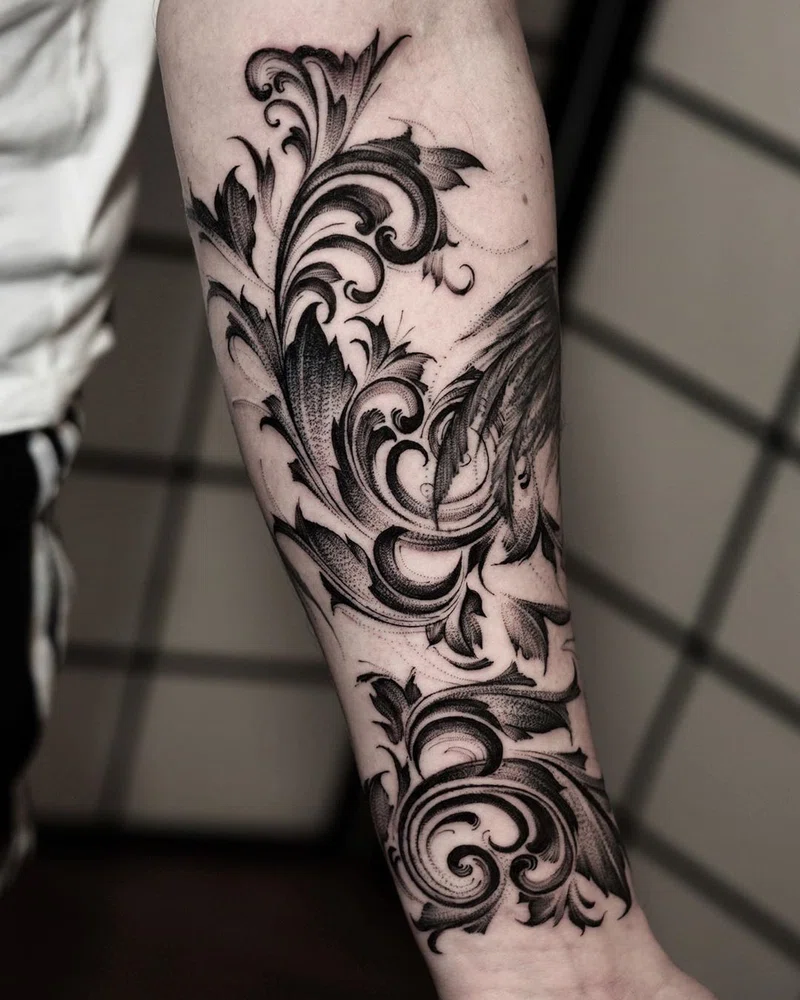
Tattoo by BK (@bk_tattooer)
In a broad overview, it is believed to have originated in the following regions:
Middle East and Central Asia:
According to history, Persian, Byzantine, and Islamic cultures developed elaborate filigree patterns in their jewelry and decorative objects.
Ancient Cultures:
In ancient times, Egyptians, Romans, and Greeks also practiced filigree. Egyptians used filigree to decorate jewelry and amulets, while Romans and Greeks incorporated it into items like brooches and buckles.
East Asia:
In this region, filigree can be found in Chinese and Japanese metalwork. China employed filigree in the creation of luxury items and decorative utensils, while Japan used the technique in the making of kimonos and ceremonial objects.
Medieval and Renaissance Europe:
During the Middle Ages and the Renaissance, artistic filigree was predominantly found in European Gothic cathedrals, where architectural elements often featured filigree details.
Indigenous Cultures:
Various indigenous cultures in Latin America and Africa also used similar techniques of wire wrapping and metalwork to create ornaments and ritual objects.
Due to the different cultures that contributed to its origins, there are many types of filigree, especially in the world of jewelry, such as Andalusian, Cordoban, Egyptian, and more.
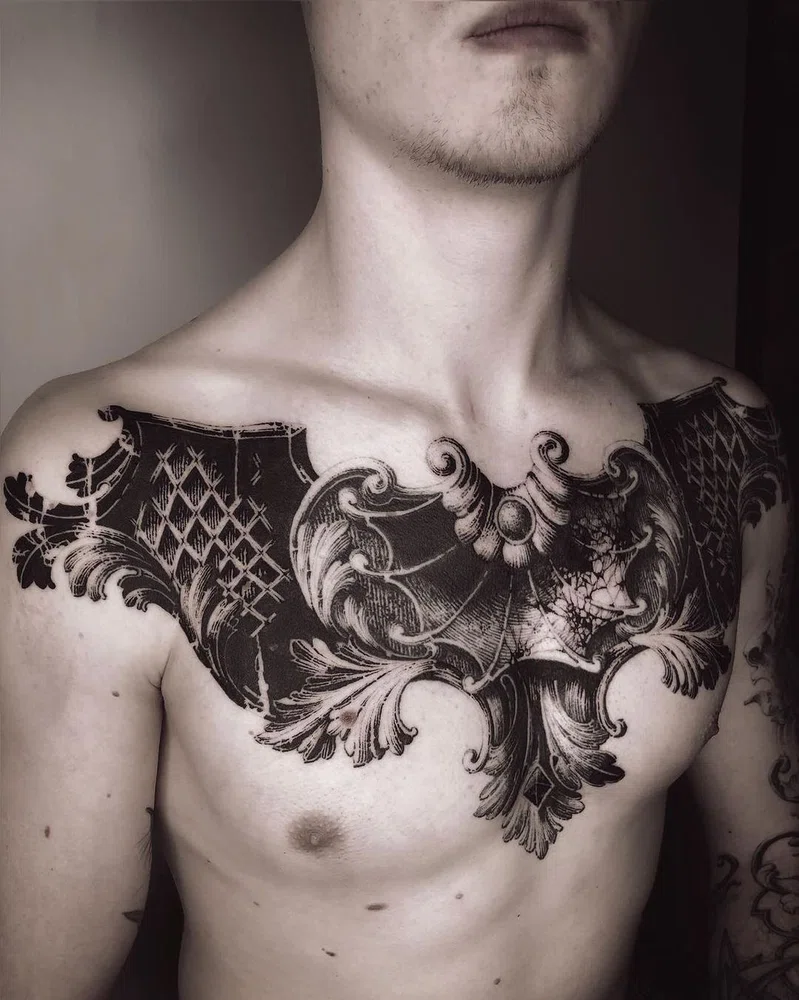
Tattoo by Anton Tychkov (@tonytych)
The emergence of Filigree in the Tattoo World
The filigree tattoo style is based on detailed and ornate designs resembling traditional filigree patterns.
While there isn't a specific date or place of origin for filigree tattoos, their development can be traced back to more elaborate and detailed tattoo styles, such as Ornamental.
These types of tattoos likely evolved from the creativity and skill of tattoo artists experimenting with fine lines, intricate details, and ornate patterns. Some artists specializing in this style may have drawn inspiration from architectural decoration, jewelry designs, and the tradition of filigree in other artistic fields.
Filigree tattoos are often associated with femininity, but they can be appreciated by anyone seeking highly detailed and aesthetic designs.
It's important to note that this style is so specialized that it requires a high level of skill and mastery of the technique, making it not recommended for beginners.
Due to the use of fine lines, excessive details, and often being done freehand, it is essential to have an experienced hand execute these tattoos, as even the slightest mistake could ruin the tattoo, which would be a shame.
Generally, these types of tattoos are done by individuals who specialize in this style or have a certain affinity for Ornamental, since they usually master the strokes perfectly.
But if you want to learn more about more complex tattoo styles, we invite you to read our article on tattoo styles not recommended for beginners, where we delve deeper into this topic.
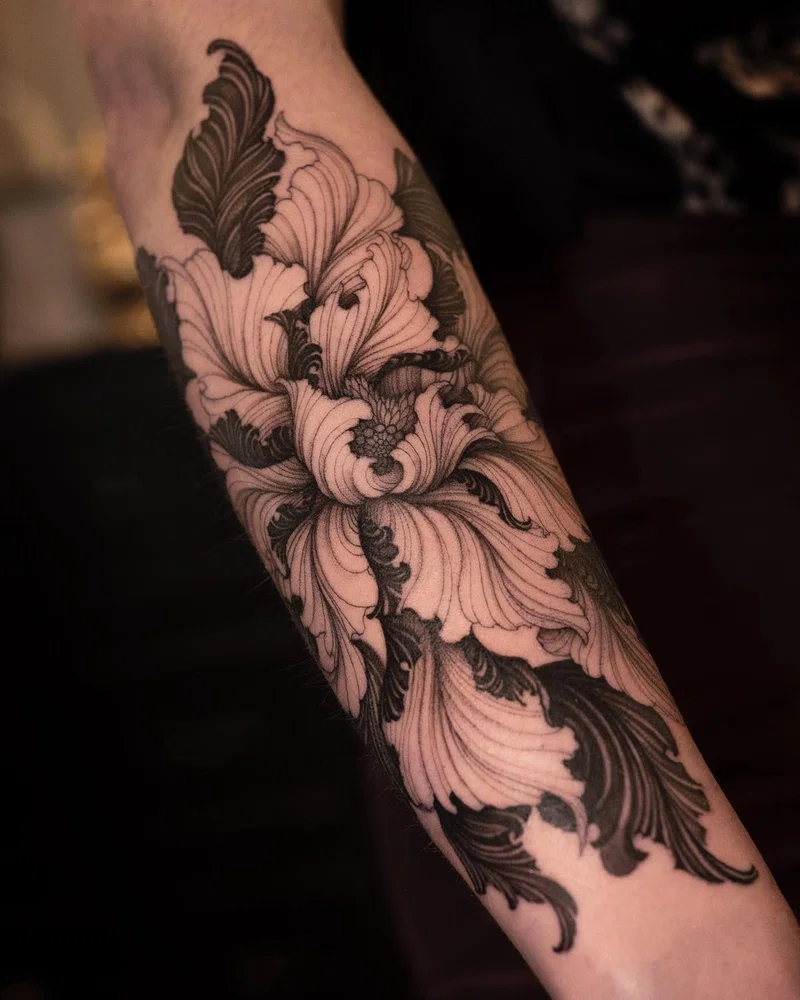
Tattoo by Sagae Grim (@sagaegrim)
Tips and recommendations for tattooing Filigree designs
Due to the challenging degree of complication compared to other styles, there are certain factors that are fundamental to achieving a good design:
Size:
Filigree designs typically require larger spaces to showcase the details and ensure some degree of durability.
Keep in mind that tattoos with excessive details and closely spaced lines in smaller areas can pose issues during the healing process because the lines tend to merge, potentially leading to blowouts.
Therefore, when designing the tattoo, it's advisable to work with your client to choose an appropriate size.
Body Placement:
Alongside size considerations, it's essential to think about the best body area to showcase the tattoo. Keep in mind that tattoos on curved body parts, such as arms or legs, tend to naturally distort.
However, for many artists, this interplay of curves can add an interesting dimension to these tattoos. The key is to tattoo in a spacious area that allows all the required details to shine.
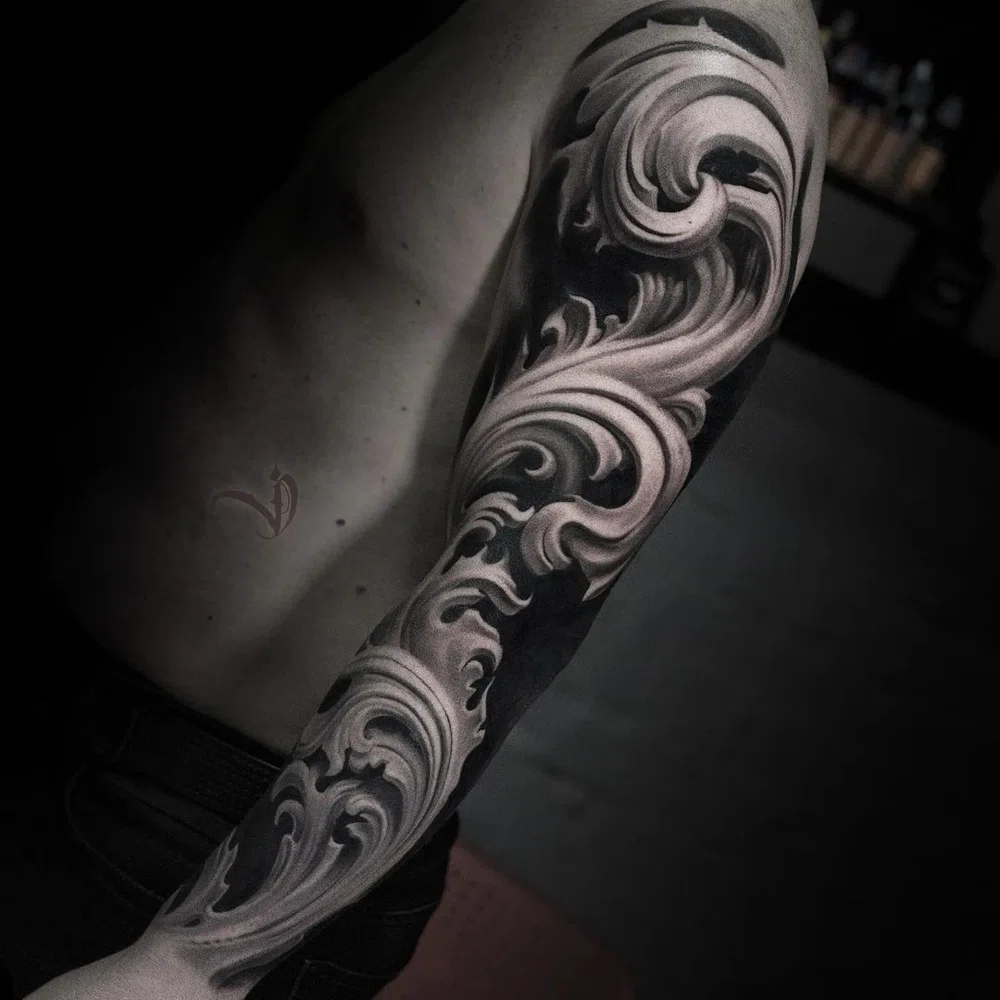
Tattoo by Dmitry Varlakov (varlakov_tattoo)
Materials:
Many tattoo artists wonder if there are ideal materials for this type of work, and the truth is that there's no step-by-step manual for tattooing Filigree.
However, it can be noted that some artists prefer specific materials, such as single-needle needles, which require a high level of professionalism. Additionally, 3, 5, and 7RL needles are commonly used for lines or outlines. The choice of ink color can vary depending on the specific design and client preferences. Nevertheless, black and gray inks are popular for Filigree tattoos, as they allow for contrast and accentuation of details.
Solid black inks are used for the main lines, while grey inks can be employed for subtle shading and gradients.
However, this can also vary depending on the artist and their tattooing techniques, highlighting the importance of practice in this style and related styles to better understand shading, where to place details, whether to start with lines or fillings, which needles suit you best, and more.
Preceding Practice:
As mentioned earlier, practice in both drawing and tattooing is paramount for mastering this technique.
To create a good design, practicing freehand strokes by hand is essential. Engage in drawing exercises to improve hand control and achieve perfect lines.
Similarly, relentless practice on synthetic skins will boost your confidence and help you determine the most suitable techniques for this type of work.
Since this style combines elements of FineLine tattooing and various shading techniques, you can practice by drawing different designs to enhance your hand's flexibility. Don't be afraid to make mistakes; remember that making more mistakes during this phase will lead to better learning.
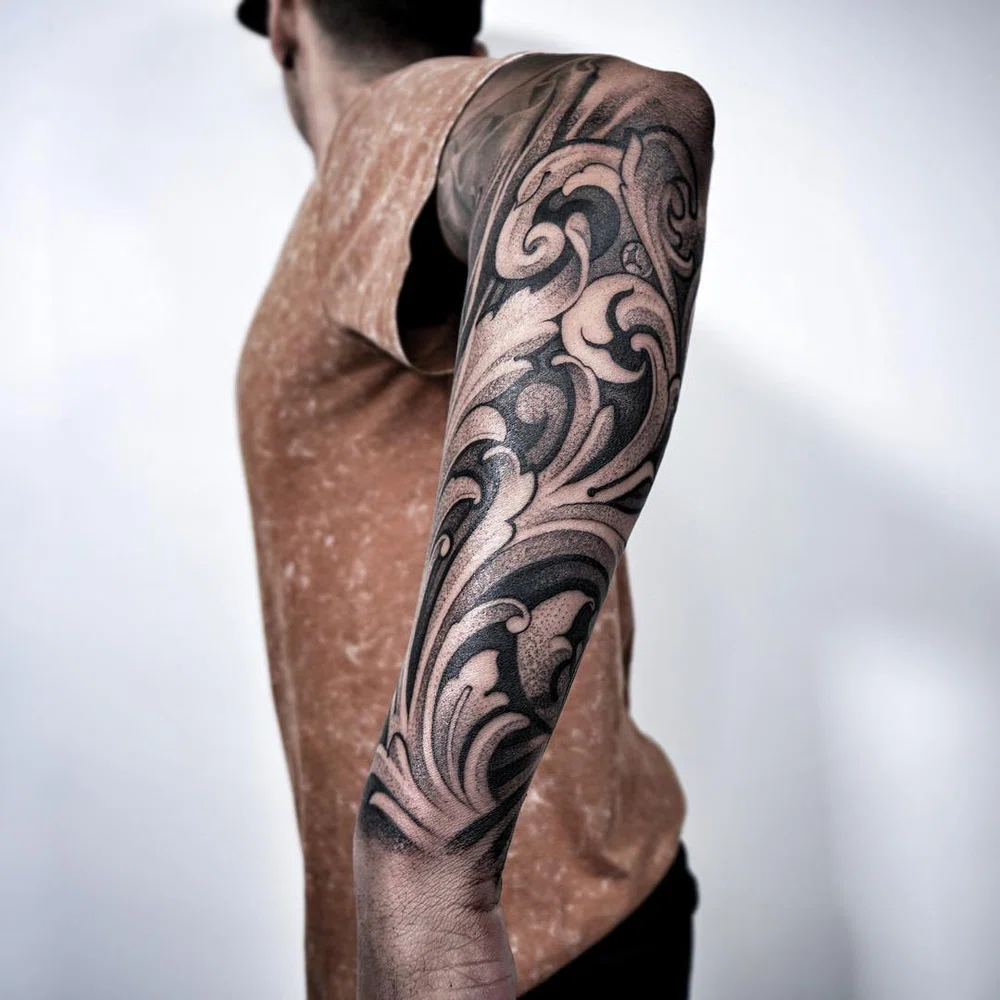
Tattoo by Lil'B (@lilbtattoo)
An Art for Professional Tattoo Artists
Filigree tattooing is a style that demands patience, skill, and a love for details. By mastering this technique, you can create truly unique tattoos that capture the attention and imagination of all who see them.
Every tattoo artist has their distinctive style, and if you aim to elevate yours to a more professional level, Filigree can undoubtedly be a good choice.
Remember that this style requires extensive practice and knowledge, but don't be discouraged. If you want to learn more about the necessary techniques for mastering this and other styles, take a look at our courses and learn with us to become a professional!